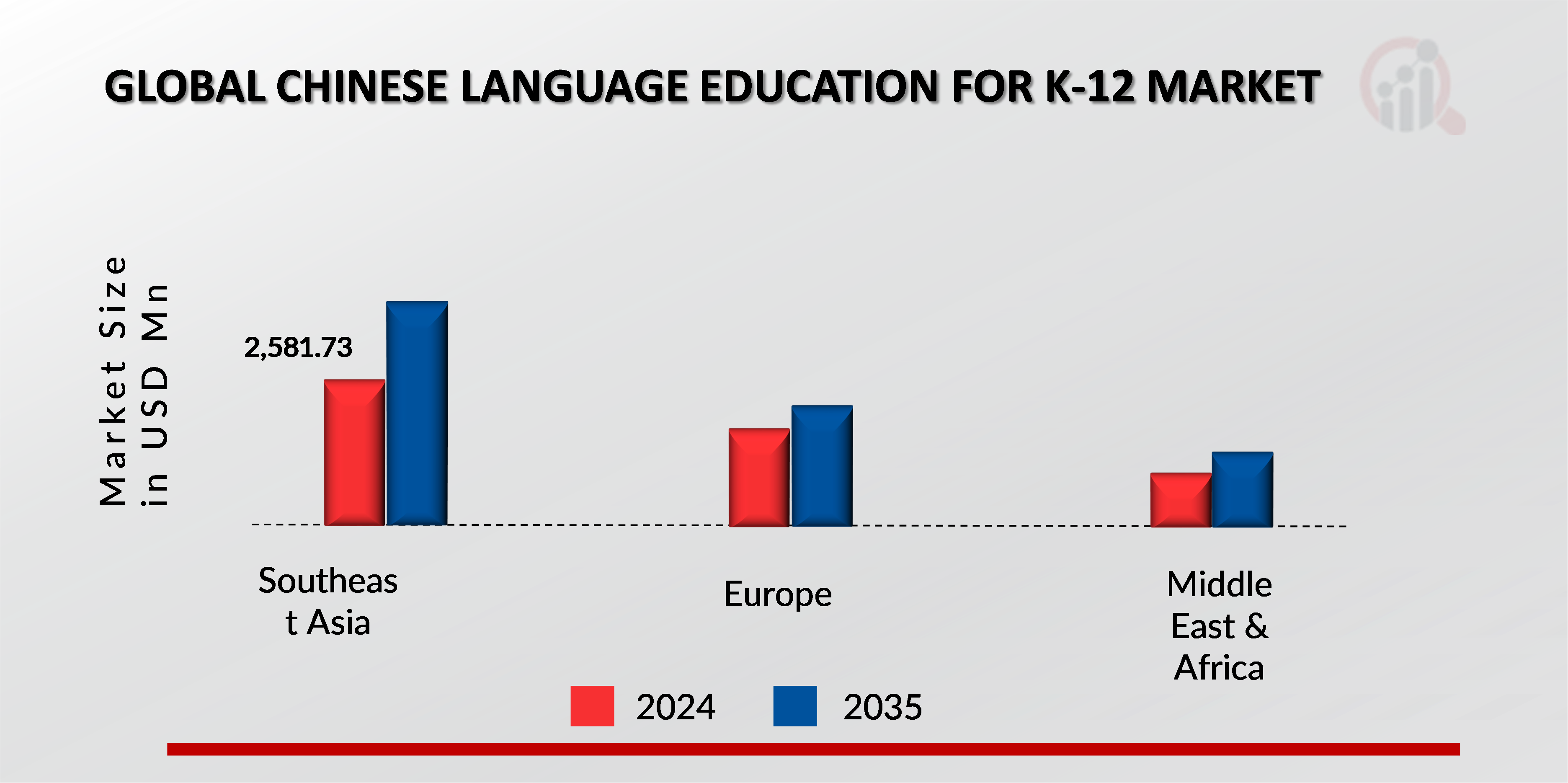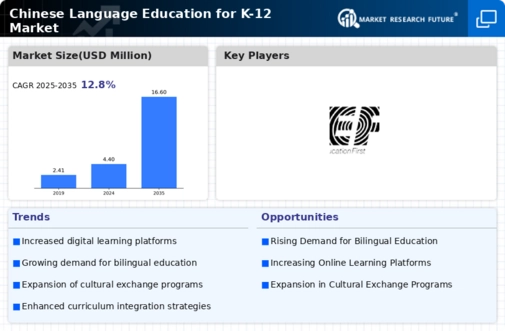Based on the region, the Chinese Language Education for K-12 Market has been segmented into North America, Europe, Asia-Pacific, and the Rest of the World. Southeast Asia accounted for the largest market share in 2024 and is anticipated to reach during the forecast period. However, Southeast Asia is projected to grow at the highest CAGR during the forecast period.
In Europe, Chinese language education has been growing steadily, supported by various institutions and initiatives. The European Association for Chinese Language Teaching (EACT) plays a significant role in promoting and improving Chinese language education across the continent. The Project „Chinese for Europeans” addresses the needs resulting from bilateral relationships between EU and China. According to Eurostat, each year the volume of imports and exports between the two partners increases. The number of European students and tourists visiting China is also growing systematically.
The project will directly respond to the growing demand for educational materials concerning Chinese, in the form of profiled courses for entrepreneurs, tourists, students and children. The number of common projects in the fields of education and culture will increase. Therefore, it is very important to familiarize EU citizens with Chinese language, culture and way of thinking.
Further, the major countries studied are: The Germany, UK, France, Russia, Italy, Spain, Indonesia, Thailand, Singapore, North Africa.
FIGURE 3: CHINESE LANGUAGE EDUCATION FOR K-12MARKET, BY REGION, 2024 & 2035 (USD BILLION)

Source: Secondary Research, Primary Research, Market Research Future Database and Analyst Review
Chinese language education in Southeast Asia has a long history due to the significant Chinese diaspora in the region. Countries like Malaysia, Singapore, and Thailand have well-established Chinese language programs in their K-12 education systems. China's influence in the Global South has expanded significantly. As of August 2023, 152 countries, most from the Global South, had planned or committed to participating in the Belt and Road Initiative. According to reports, for the first time, China's exports to BRI countries in 2023 surpassed those of the United States, Europe and Japan combined.
Unlike developed countries, China offers a model of peaceful coexistence and development as it engages with developing nations.
In the Middle East, countries like the United Arab Emirates (UAE) have made significant strides in incorporating Chinese language education into their national curricula. While interest in learning Mandarin declines in the West, Middle Eastern children are attending classes in China’s official language as part of a geopolitical shift in a region that has been traditionally regarded as a sphere of US influence. Saudi Arabia, the largest Arab country in the Middle East, mandated Mandarin lessons in all public and private secondary schools, which are expected to extend classes to second year pupils in this academic year.
Moreover, Traditional Classroom-Based Programs held the largest market share in 2024, and Online Chinese Language Learning Platforms is the fastest growing market in the Asia-Pacific region.












